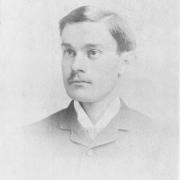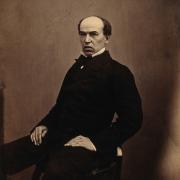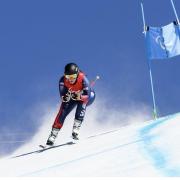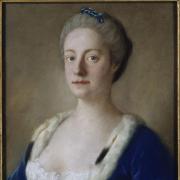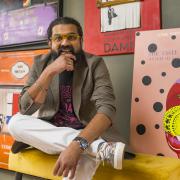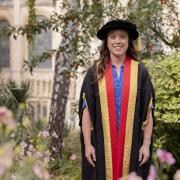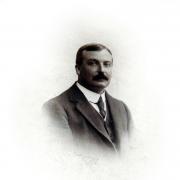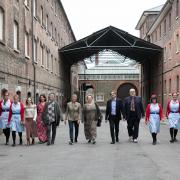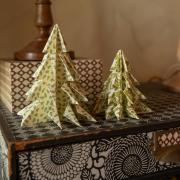Harmonious and lyrical works in stone and wood are created by Patrick Crouch at the University of Kent in Canterbury
The sun is shining when I go to the the University of Kent to interview the sculptor Patrick Crouch. He is out in the open with various pieces of sculpture in different stages of development: a large cube of Caen rock on a pedestal for ease of work, and a half-finished piece.
Patrick invites me inside and shows me more works of sculpture created by practitioners of the Pure Form group, who exhibit in Kent each year. Sculpture is a new medium for me to explore and I am keen to fund out the most critical and challenging aspects of the medium.
Patrick has no hesitation in replying about the problems that sculpture poses with respect to painting: weight.
“When you lift a heavy sculpture, well, just think of a watercolour!” he laughs.
Is there an aesthetic problem? “We do have one over painting: we can create god, while painters can only depict.”
Yet, he points out, the making of the image of man is against one of the 10 commandments. A subversive form in essence, then. “Carving stone is an act of faith,” he says.
Many of Patrick’s sculptures are abstract, but there is a fair sprinkling of figurative works. “One of the problems of the abstract is getting the measure of what you want to take away, with a figure, you just fit it in.
“When I’m carving wood, it’s usually figurative because trees are figures and figures are trees.” The material speaks out.
Recently he has been carving bulls (“not balls” he says mischievously) and the reason is simple: “It’s just fate, someone gave me a tree root.”
At the age of 17 Patrick first worked on a tree root and now he finds that this is what he has always wanted. We are a few years down the line now ...
There is a website with a portfolio of Patrick’s works. Some of them are in colour. I ask what is the governing principle behind choosing a colour. He says it is a sacrifice. “If I use colour, I throw it on, as in a ritual. So I like it to be an offering. I use it as a stain, a sort of patina.”
The actual choice of colour is a matter of fate. “What is close at hand. What is right. One always has a palette.”
So how do you know when it is right? “When it’s finished” he says briefly. “When it’s wrong, it looks wrong.”
I don’t really feel I am getting to the crux of the question, but what is clear is that years of experience permit the creator to judge the completeness, the “perfection” in Patrick’s words, of a work.
“I hate public sculptures, for example in stations. There’s no poetry in them, they’re caricatures. But when a work is good, it’s good, when it is not, you don’t exhibit it.”
I ask Patrick what governs his choice of material, whether wood or stone.
“If it’s free! Portland Stone you have to pay for and it’s heavy and expensive. For example, The Slim Divide of Reason (right) was paid for by the University as a leaving gift from Professor David Melville.”
Felicitously the President of sculpture group Pure Form is Brigadier John Meardon, who is also a senior lay member of the Cathedral, the Receiver General.
Pieces of Caen stone from Canterbury Cathedral, which can no longer be used because they are decaying, are useful as material for the sculptures that Pure Form then create.
Grayson Perry in his first Reith Lecture noted that the contemporary problem is one of validation, so I ask Patrick what responses he has to his work.
“I sell a lot of it. I have some good collectors throughout Kent,” he tells me.
Patrick has done many public and private commissions and says: “I’d like to think my work could go anywhere. The better the location, the better the response to it.”
Pure Form started about 12 years ago, mainly because sculpture was lacking in contemporary art. “Pure Form goes back to the origins used by Henry Moore, for instance. Gauguin and Van Gogh were pioneers of contemporary art and self taught so their views were uninterrupted by art theory. Then there was Abstract Expressionism, which was a bit like rock and roll in paint.”
Not surprisingly Patrick, who was also taught by Anthony Caro, acknowledges that he works in the tradition of Moore and Hepworth and points out as an aside that Henry Moore’s most prolific and profitable period of creativity occurred in Kent.
“The studio at Marley Lane in Kingston Village should be a Museum, as should the studio at Barfreston, where you can also find the most impeccable church in Northern Europe.”
For a spectacular show of Patrick’s work with the group Pure Form, visit The Salutation in Sandwich this August, where the works are splendidly displayed in the beautiful gardens.
Get in touch:
A constant display of the group Pure Form is always on view at the University of Kent, School of Architecture. It is the only school in the UK giving the opportunity to carve stone, making Kent unique in Schools of Architecture.
Contact Patrick Crouch for more information on: 01227 766288
Patrick’s work can be viewed at: Linden Hall Studio, 32 St George’s Road, Deal CT14 6BA, 01304 360411, open Wednesday to Sunday 11am-4pm. The exhibition runs from 14-19 July.
Pure Form exhibits at the Salutation, Knightrider Street, Sandwich CT13 9EW, 01304 619919 in August.
n




